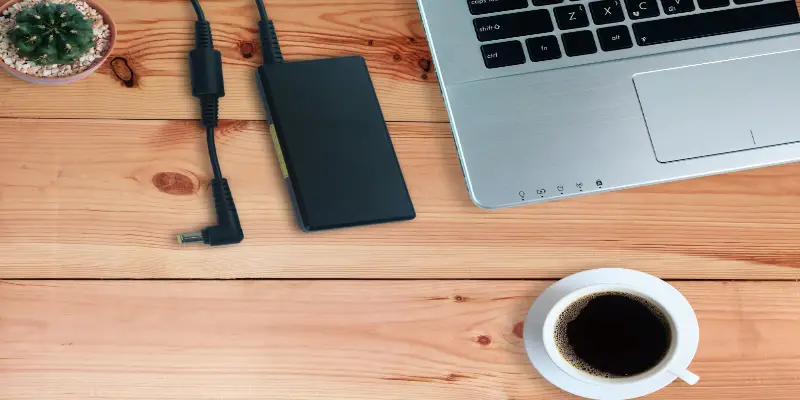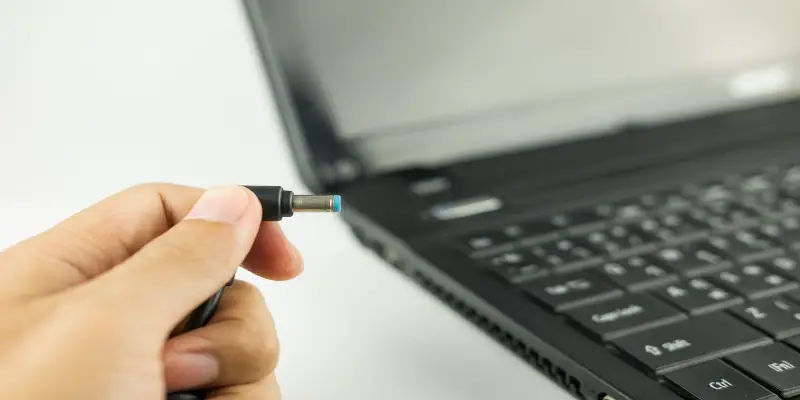Disclaimer: This post may contain affiliate links, meaning we get a small commission if you make a purchase through our links, at no cost to you. For more information, please visit our Disclaimer Page.
The 40-80 rule is a popular one in the world of batteries.
The 40-80 battery rules apply to all rechargeable batteries, and that includes laptops. This rule encourages keeping the battery meter between 40 percent and 80 percent. Charging your laptop battery to 100 percent and running it dry causes stress and reduce its longevity. Filling the laptop when it’s halfway will triple the number of recharges.
Table of Contents
What Is The 40-80 Battery Rule?
The 40-80 battery rule indicates that you should maintain the battery meter of your electronics between 40 percent and 80 percent.
This rule discourages charging your battery fully to 100%, and you should not let it run dry to zero percent before you recharge it.
Lithium batteries mainly used on laptops work best between 40 percent to 80 percent. You should charge your battery frequently and keep it cool to avoid overheating, which is destructive for your battery.
Research shows that whenever you plug in your electronic charge that uses a lithium battery, such as a smartphone or laptop, it holds a little less energy than it did before.
It would be best to let your gadgets drain a little rather than recharge them once the battery meter falls slightly below 80 percent.
Does the 40-80 Battery rule apply on laptops?
The 40-80 rule indicates that you should have your battery meter between 40 percent and 80 percent. Charging your batteries from zero to 100 percent will reduce their lifespan. If you want your laptop battery to keep humming for many years to come, make sure you top up the battery charges once the battery meter goes below 40 percent.
Every laptop battery has the number of charging cycles it needs to complete. Most lithium batteries can go from empty to a full charge between 300 and 500 times before it expires.
Use the full spectrum of a lithium battery and later charging it once it hits zero may increase its chances of wearing out faster. Your laptop battery becomes weaker after completing a specific number of recharge cycles.
Every time you charge your laptop battery from zero to 100 percent, it completes an entire cycle. Recharging your device before it hits zero percent and unplugging it before its total capacity will triple or quadruple the number of recharges the battery can undergo before it wears out.
When you keep recharging the laptop, you increase the number of recharge cycles the battery will have, increasing its life span.
Exposing your temperature to extreme temperatures will cause overheating and reduce the effectiveness of the battery. Overheating your laptop battery will decrease the battery’s capacity by 35 percent in one year. Leaving your laptop plugged in at all times may expose the battery to high temperatures.
Recharging the laptop to 100 percent and leaving it plugged in will make the laptop heat up on its own, which reduces the capacity of a battery by 35percent for one year.
The high temperature for your laptop battery will reduce the battery’s longevity, hence the need to retain the highest charge at 80 percent. The 40-80 rule helps get the most out of your laptop and other electronics.
Should I keep my laptop battery between 40 and 80?
Maintaining your battery charge between 40 to 80 percent is highly recommended. This rule may be tough to follow, especially if you are working in a busy environment. Checking the battery meter constantly may be unrealistic for people with deadlines to meet, and most prefer to work with their laptops plugged in throughout.
However, make sure your battery does not go below 20 percent, as this will mean you will complete an entire cycle once it hits zero percent. Try keeping your laptop above 40 percent charge if you often use it away from its charger.
Whenever you need to recharge your laptop battery, top it off to 80 percent. Maintaining your laptop battery between 40 to 80 percent will extend its life span and charge capacity.
Some manufacturers offer a viable solution to this by allowing the users to set a maximum battery charge threshold. This will come in handy for people with tight work schedules. Check the support software of your manufacturer to see if it has a charge limit for you to use it.
Alternatively, if your laptop has no charge limit, do not panic. Ensure your laptop is plugged in regularly with the battery charged to its full capacity.
Modern laptops are made with lithium batteries that stop charging once the battery is charged to its full capacity and the power is diverted to the system.
Also, you can check how long it will take for the laptop to move from a charge of 80 percent to 40 percent, then set a timer. After that, check how long the laptop takes to charge from 40 percent to 80 percent. Set a timer that will alert you once the time needed to recharge to 80 percent elapses or when the charge is discharged to 40 percent. This will help keep your battery healthy.
However, you need to ensure the battery will not go below 20 percent, which could mean you have to recharge it hence complete a full cycle. Letting your laptop stay at zero may not be damaging, but the full recharge is what hurts the battery.
The only time you should allow a battery completely drain is when installing a new battery in a device. When you install your laptop battery, it is best to totally drain it since this helps calibrate the battery gauge.
This will help you get an accurate estimate of the battery life and recharge it when necessary. Getting accurate readings of the battery helps prevent full discharge that would lead to false readings and unexpected shutdowns.
It is recommended to charge your battery once it falls below 80 percent. The battery’s internal resistance starts building up to a notable degree, making the charging take longer than when it had charged to its full capacity.
It becomes harder to track how much time you need to recharge a battery compared to what you expect.
Is It Bad To Charge Your Laptop To 100?
Charging your laptop to 100 percent does not have any negative effect on your battery. People who may have a hard time maintaining their laptop battery at 40 to 80 percent should keep it at 100 percent. This is one of the most reliable ways of minimizing the use of its full cycle.
The battery will not charge further once it’s fully charged. If the battery stays plugged in with 100 percent charge, it will not charge or discharge, and consequently, you won’t be using any of its cycle life.
However, it is recommended to unplug the charger once the laptop hits 100 percent. Keeping your battery charged at 100 percent is the more convenient and simplest way of preserving your battery’s life.
Conclusion
Performing shallow discharge on your battery will extend its life. Lithium batteries perform better when discharged for a little bit then charged a little. Avoid discharging your laptop battery top zero percent all the time as this will lead to the use up of all battery’s charge cycles.
Discharging your battery to 50% is healthier for its long-term life than small discharges to roughly 90% or massive discharges to 0%.
Make sure you get the best number of cycles to usage ratio for longer battery life. This will give you value for your money.
If maintaining a 40-80 percent charge is difficult, make sure your battery never discharges to zero percent. This will minimize the number of times the battery will complete a full charge cycle.
Constantly recharging your battery before it discharges to its extreme and shuts down will increase its charge cycles and extend its life.


